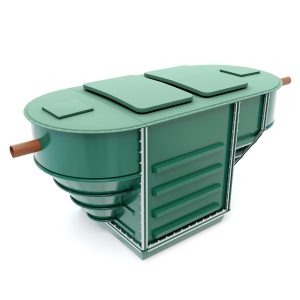Smooth Operations – Planning for Onsite Treatment Success

Modular hybrid wastewater treatment installation (Image source: WPL Limited)
Many industrial process companies who have opted for onsite treatment facilities have had their fingers burned by badly planned and delivered projects. WPL specialises in package wastewater treatment plants and, like many other equipment providers, is being asked for extra assurances that its treatment systems will work.
Operational costs associated with industrial effluent are not always fully appreciated and a lot of customers get a shock when they look at their return on investment. It is really important to fully understand what the cost will be, before you can decide if it is a viable option.
Chemicals and power consumption costs are often underestimated, as are variables like sludge production rates. If more sludge is produced than expected, storage facilities may not have the necessary capacity and tankering costs could rise. Also it is important to match the size of sludge storage to the size of the tankers that can access the site to remove it.
And remember to budget for labour costs. It is necessary to think carefully about how much labour is required for an industrial system. If you install a DAF [dissolved air flotation] system, you will probably need an operator on site who can intervene if the system fails or is at least on site every day. Have you incorporated this cost into your planning?
Oversights like this are common and commercial failures occur because people have not thought about the investment upfront and have not done their homework.
Testing and piloting are key
Discrepancies between designs and the delivery of a project can be avoided by conducting detailed reviews and pilots before building a permanent solution. Put simply, you need to know that what has been designed is going to work in real time and fits in with the level of training your employees have had.
We would start with a lab scale review to sample and test the effluent to get the correct dosing regime, before we get to an estimated cost for the project. After the lab work, we would strongly recommend a reasonably sized pilot trial. This allows us to really look closely at things like chemical, power consumption and sludge production giving a very accurate indication of how the plant will operate and the out-turn costs.
WPL’s own pilot plants can be hired with trained operators, or training can be given and operated by site. As the plant doubles as emergency hire, it is designed for ease of installation and operation. Biological processes need to be installed for at least 12 weeks, though they are sometimes in place for months or even years. The longest pilot we had in place was for three years. On one occasion the kit worked so well, the company wanted to use it permanently.
One of WPL’s more recent projects was at a winery in Norfolk, which saw the development of an onsite biological treatment plant, following a successful 10-month trial. The winery routinely tankered wastewater offsite for treatment but can now treat a maximum 100m3/day, for discharge to sewer network. The pilot successfully demonstrated that the effluent could be biologically treated to the required standard, even though its composition can fluctuate widely.
The pilot plants are easy to install and they do tend to work well, allowing for lots of variations and tweaking. That helps develop the full-scale design, so we can come up with a proposal and a fixed price.
Every onsite treatment facility should be piloted first. Yes, pilots are expensive but they will save you money in the long run. I would not do an industrial application without having a trial.
Do your research
Many projects have been hampered by poor quality kit. You get what you pay for. I’ve seen dewatering systems stop working after a month and some equipment mothballed when the operational complexities or ongoing costs are realised.
A lot of it comes down to manufacturing, or people over-selling the technology into inappropriate applications, so think carefully before going ahead with purchasing. Get hard facts and data upfront and get advice and recommendations. Look for tried and tested equipment, with good customer reviews. Don’t be tempted to buy off-the-shelf as all sites differ and one piece of equipment does not fit all.
Speak to people who’ve operated it. When it comes to wastewater treatment, you do not want to be the first company to try a brand new piece of kit. You are going to be spending a lot of money, anything from £5,000 to £150,000 or even a million, so you have to be careful and really do your homework.
Handle with care
Maintenance is of course essential, once the unit is up and running, but problems can occur due to a lack of operating knowledge. People do not always read the operating and maintenance manuals and they do not send staff on the training sessions we set up. Perhaps they do not view training as important, but it really is. Operators need that knowledge. Some of these pieces of kit are really specialist.
Unrealistic expectations of what an onsite unit can handle can also lead to failures. There are incorrect assumptions of what a piece of kit will do, or what it can handle. The only thing that should go into wastewater treatment sites is wastewater, nothing else. No hair nets, tin cans, plastic cable ties or packaging materials.
We find all sorts of things wrapped round pumps – it could be that people lift up the gridding to dispose of things quickly. Education and ongoing training would really help prevent equipment and processes breaking down.”
Look to the future
Your new onsite treatment facility might meet required environmental and trade effluent standards now but will it in the future? Building in futureproofing, especially legislative, is a difficult thing to do as you cannot guess the future. You can assume that as pressure increases on the sewer network, the water company will increase charges, set stricter discharge standards or possibly stop industry going to its sewer. Ask the question of your supplier – what is the next step in treatment? At some point in the future could I reuse this valuable resource?
Source: WPL Limited







